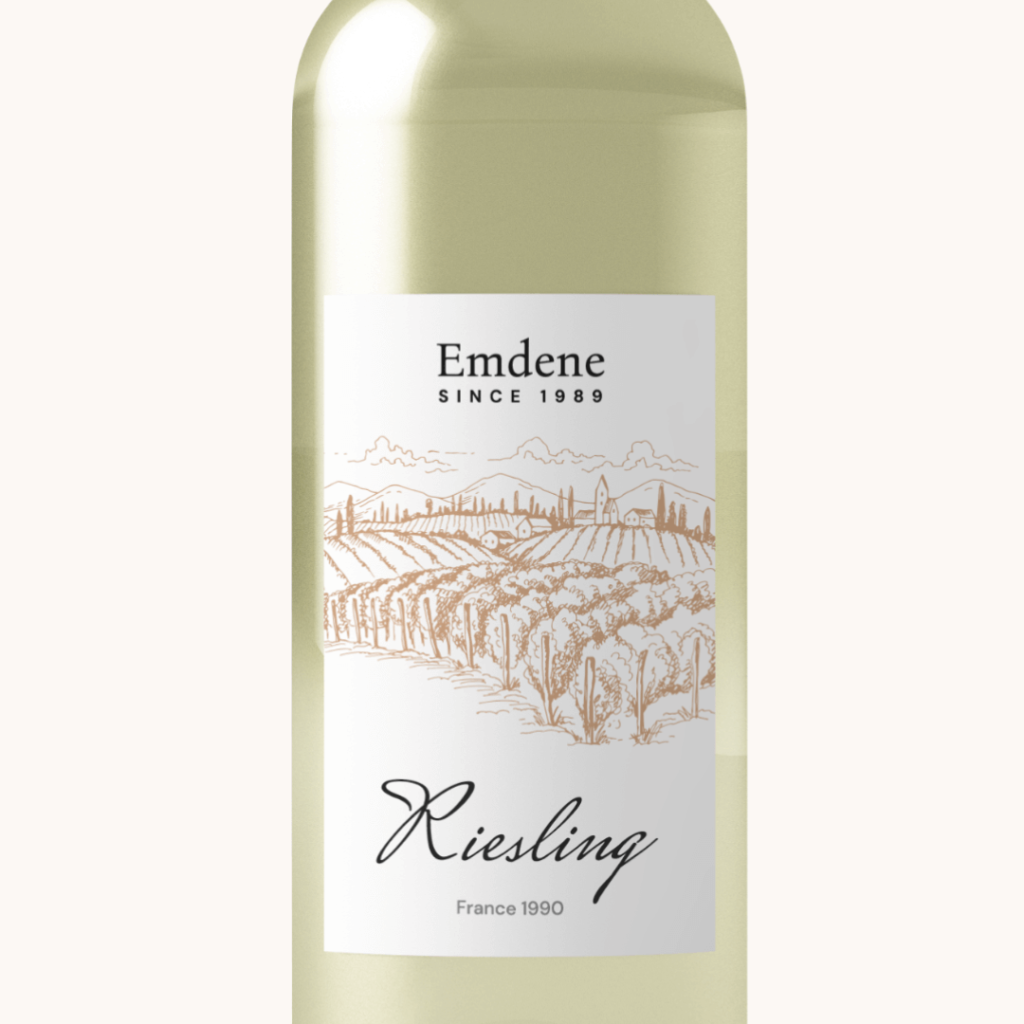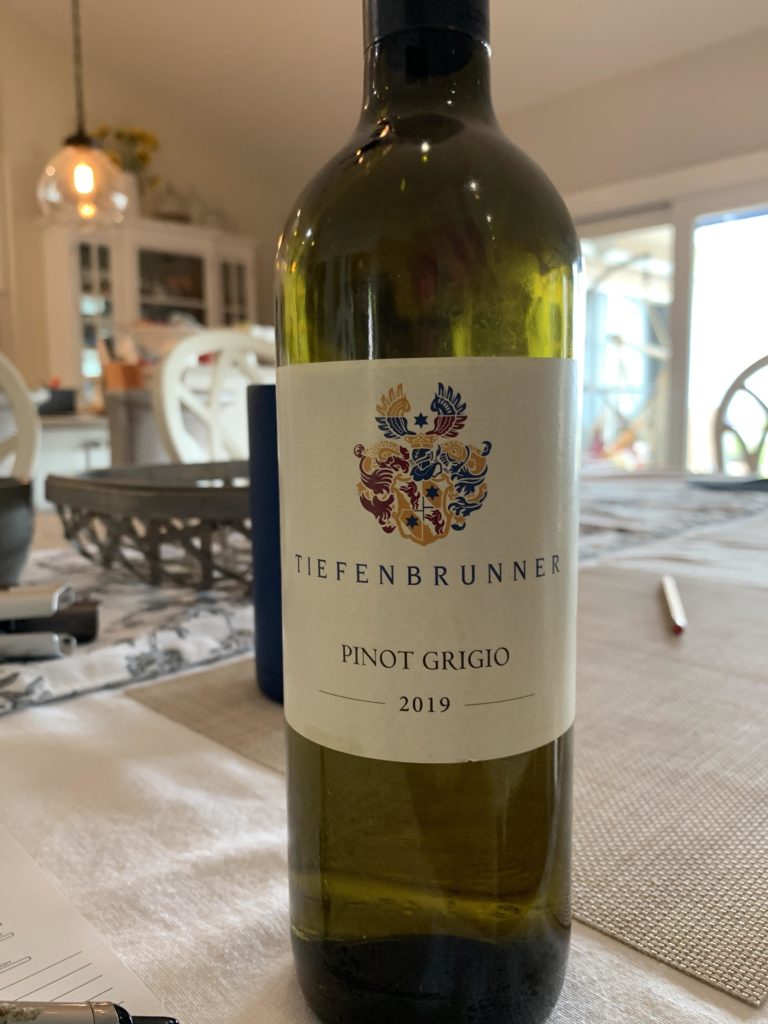Riesling vs. Pinot Grigio: A Detailed Comparison
Cool, crisp and elegant, white wine has always made for a refreshing drink. Enjoyed as an aperitif for starting off the evening and perfect for toasts, this wonderful versatile wine comes in many varieties, two most popular of which are Riesling and Pinot Grigio.
Whether you are a budding wine connoisseur or just want to know your wine, you have come to the right place. In this article, we explore differences in taste, sweetness level, and food pairing between Riesling and Pinot Grigio. Read on to find out more.
Riesling vs. Pinot Grigio
Reisling and Pinot Grigio are both white wines and their similarities end there. Each type has its own distinct characteristics, flavour profile, aromas and is quite different from the other in taste and style. Knowing the differences between the two wines will help you choose the right one for your next meal or celebration.
For starters, Riesling originated in the Rhine region of Germany, whereas Pinot Grigio or Pinot Gris is said to have originated in the Burgundy region of France. A sip of each wine will reveal Riesling to be sweeter and more aromatic, with a higher acidity level and a range of fruity flavors. On the other hand, Pinot Grigio is drier and less acidic than Riesling, with a lighter body, refreshing taste, and citrusy or mineral flavours.
Apart from the grape type, the terroir (climatic conditions, soil type, etc) and production methods employed influence the flavour of wines. As both Riesling and Pinot Grigio are made from different grape varieties and grow in different terroirs, they have very different flavour profiles.
Riesling
With its origins in Germany, Riesling is made from the white-skinned grape variety of the same name. The riesling grape is known for its high acidity and floral aromas. Riesling wine can be deliciously sweet to wonderfully crisp and dry (not sweet), and are described as having a fruity, honeyed flavor with notes of apricot, peach, and apple.
Pinot Grigio
Pinot Grigio, also known as Pinot Gris or Grauburgunder, is a French white wine which is made from the grayish-blue Pinot gris grape variety. The flavour profile of Pinot Grigio can range from ripe tropical fruit notes of melon and mango to some botrytis-influenced flavors. It is a full-bodied wine with low levels of acidity. Pinot Grigio is perfect for warm weather, and has notes of citrus and green apple with a hint of minerality.
Riesling vs. Pinot Grigio– What’s the difference?
Origins and History
Riesling is considered as one of the “top three” white wine varieties together with Chardonnay and Sauvignon blanc. This wine is also known to be terroir-expressive, meaning that its character is influenced by its place of origin.
Riesling has a history which is as rich as its flavour. It has several written references dating from the 15th century, although with varying orthography. The wine originates from the Rhine region of Germany, as the vineyards along the banks of the Rhine river provided the perfect conditions for Riesling grapes to flourish.
Now, Riesling is also cultivated in other regions of Germany, as well as in France’s Alsace region, Austria, and other wine regions of the world, including Australia and the United States.
Pinot Grigio is believed to have originated in the Burgundy region of France during the Middle Ages. It is a member of the pinto family of grapes along with Pinot Noir and Pinot Blanc. In fact, it is thought to be a mutant clone of the Pinot noir grape variety.
Despite originating in France, the grape is now widely gorwn in the Veneto region of Italy. Pinot Grigio gets its name from the grayish-blue hue of the grape, and in France, the wine is called Pinot Gris. “Grigio” and “Gris” mean “grey” in Italian and French respectively.
Regions and Terroir
The taste and flavour profile of wine vastly differs from region to region as the terroir greatly influences the wine’s characteristics. Riesling is a prime example of this as it is a terroir-expressive wine. This means that despite being of the same variety, a bottle of Riesling Germany will taste very different from an Australian Riesling.
Even though Riesling was traditionally produced in the cooler climates of Germany, it is now produced all over the world even in warmer climates. Rieslings produced in cooler climates exhibit apple and tree fruit notes with higher levels of acidity, and sometimes taste sweet and honeyed. In warmer climates, Rieslings develop more citrus and peach notes, and have a distinctive lime note.
Like Riesling, Pinot Grigio is also produced in varied climatic conditions worldwide, and the terroir affects the taste and aromas of the wine. The Pinot grigio grape prefers cooler climates, or places with drier climates with low humidity. This is because its skin is thin, which makes it susceptible to disease and rot.
The resulting wine is typically light-bodied, with high levels of acidity and the crisp, refreshing flavors of citrus and green apple.
Wine Regions
Riesling is a versatile wine which can be grown in cold and warm climates, this has made the riesling grape popular among farmers and winemakers around the world. As of 2015, Riesling was the most grown grape variety in Germany with 23,596 hectares (58,310 acres) of vineyards.
Apart from Germany, the riesling grape variety is also grown in Austria, Slovenia, Serbia, Czech Republic, Slovakia, Luxembourg, northern Italy, Australia, New Zealand, Canada, South Africa, China, Crimea, and the United States (Washington, California, Michigan, and New York).
Pinot Grigio is produced in 22 countries around the world. In fact, the total area cultivated by this vine worldwide is about 115,000 hectares. The Veneto region in Italy is famous producing light and refreshing wines, while the Alsace region in France is produces a full-bodied Pinot Gris with a distinctive “oily” texture, which New World wine regions try to replicate.
Some of the other countries that produce this white wine variety includes Australia, Germany, Hungary, Italy, New Zealand, United States (Oregon, California, New Mexico, Idaho, Michigan, Ohio, Arizona, Virginia, New Jersey, Washington, Pennsylvania and New York).
Flavour Profile
Riesling is a sweeter white wine with high levels of acidity and fruity flavours of peach, apricot and melon. Some Rieslings also exhibit pleasant floral notes which give the wine its complex and crisp taste.
The sweetness of Riesling depends on the region where it is produced. The wine is versatile, in that it can be dry, semi-dry, or sweet. Dryer Rieslings have a tart, citrusy taste, while sweeter Rieslings have a punchy fruit flavour profile.
Pinot Grigio is known for its characteristic light and refreshing taste, and low to medium acidity levels. Its flavour profile is a beautifully complex combination of pear, apple, honey, citrus, and peach. The wine can also have a tart taste with hints of lemon and lime.
The flavours exhibited by Pinot Grigio differs from region to region. Pinot Grigio from Italy is known for its floral and fruity flavors, whereas Pinot Grigio from Oregon has notes of apples, and stone fruit like apricot.
Food Pairings
Because of the perfect balance of acidity and residual sugar, Rieslings go well with a variety of foods. It can be paired with white fish or pork, and is one of the few wines that can pair well with the stronger flavours and spices of Thai and Chinese cuisine. Rieslings are also perfect companions to foods with high salt content as the wine provides a good balance.
As Pinot Grigio is a delicate, neutral wine, it pairs well with light, fresh and herby flavours. It is a perfect companion to summery dishes like salads, chicken and seafood, as well as light pasta dishes and risottos. It may not be able to handle heavy foods, so avoid pairing it with meaty and heavily creamy dishes. Pair your Pinot Grigio with airy cream-based dishes and vinaigrette dressings instead.
Riesling vs. Pinot Grigio – Which one’s better?
It goes without saying that the better wine depends on each person’s individual preferences, but there are certain factors like versatility which makes some wines have a slight edge over others. For cooking purposes, Pinot Grigio is better than Riesling as its dry and crisp taste elevates the subtle spices and herbs of your food. On the other hand, Riesling is too sweet to be used for cooking as the sugars in it can caramelize in the cooking process.
Both wines are great for tasting and can be served to guests at various events, However, it also depends on the food pairings. Pinot Grigio pairs well with most savory dishes, but Riesling’s sweetness could affect the taste of your food by making it too saccharine. This doesn’t mean that Riesling is a bad wine, it just has to be paired with heavier dishes which can handle its richness.
Overall, Pinot Grigio seems to have a slight edge over Riesling as it is more versatile than the latter.
Final Thoughts
To conclude, Riesling is a sweeter white wine which offers fruity flavours, is crisp and light-bodied with higher levels of acidity, while the Pinot Grigio is a full-bodied neutral white wine which can be fruity or tart, with low to medium acidity levels. While both are beautifully delicious wines, it depends on one’s personal taste and food preference to choose between them.





